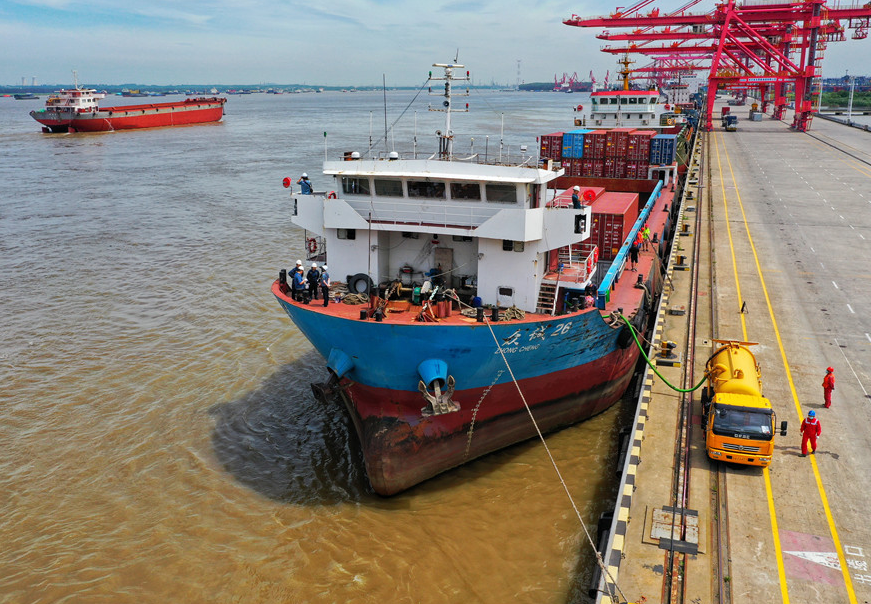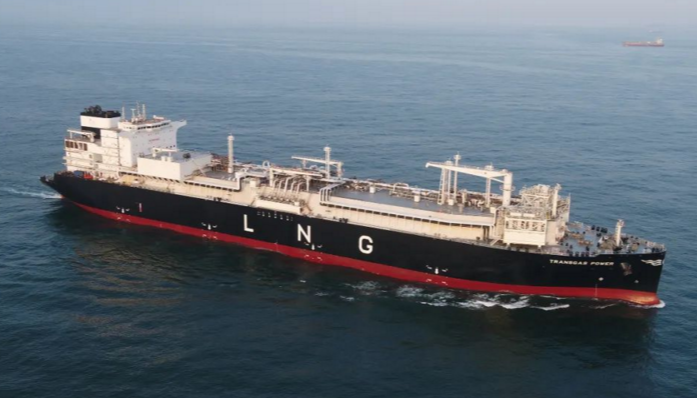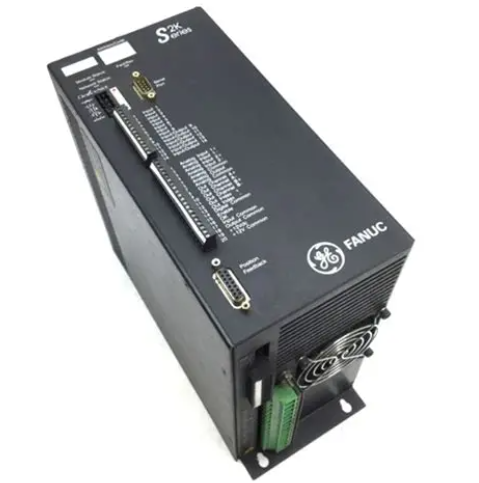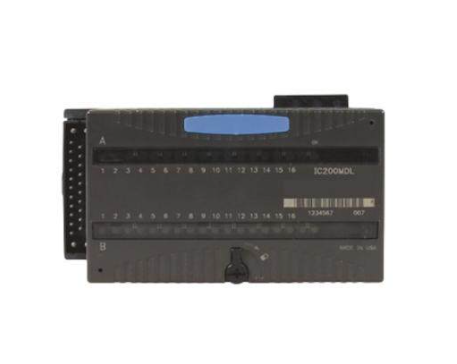The new ship market is expected to usher in a strong recovery

Oil ship market outlook: the tension between supply and demand is highlighted, and the new ship market is expected to usher in a strong recovery
The improvement in oil shipping spot earnings in 2022 did not drive new ship orders. In 2022, shipyards' tanker orders on hand and the proportion of orders on hand to existing capacity are at the lowest level in nearly 20 years. According to the historical law, when shipyards' orders in hand are at a low level, the improvement of spot revenue will often drive shipyards to add new orders, but the situation is more special in 2022. According to Clarksons data, the average global tanker spot revenue in 2022 is 37,188 US dollars/day, an increase of 474% compared with 2021. However, shipbuilders ordered 2.1 million CGT of new tankers, 63% lower than in 2021. We think there are mainly the following reasons: 1. The ship price in 2022 is high. 2. Experiencing an overall loss in 2021, shipowners have insufficient motivation to buy new ships. 3. Excess capacity accumulated over the past years needs to be further digested.
High ship prices in 2022 and tight shipyard capacity have dampened tanker owners' willingness to place orders. Global orders for new ships (container ships, LNG carriers) increased significantly in 2021, correcting for the doubling of gross tonnage year-on-year to reach the highest annual order volume since 2014. At the same time, in May 2021, the price of 20mm medium thick plate in China reached a historical peak, rising 69% from the 2019-20 average price. The simultaneous rise in demand and costs has caused ship prices to soar. In addition, since the financial crisis, the global shipbuilding capacity as a whole has shown a downward trend, and the current global actual shipbuilding capacity in use has fallen by 40% from the peak level in 2010, and the sudden rise in demand has led to continued tension in shipyard capacity. As a result, high prices for new ships and continued constraints on shipyard capacity have combined to discourage tanker owners from placing orders.
The owner has just turned a profit and has little incentive to buy a new ship. In 2021, the oil transportation market freight rate continued to hover at a low level with high fuel oil prices, and the profits of the world's major oil transportation enterprises collectively plummeted in the first three quarters, falling by almost 100% or more. In 2022, the oil transport market began to recover, and most oil transport shipowners turned a profit, but based on the uncertainty of the oil transport outlook and the concern of excess capacity, most shipowners are cautious and have insufficient incentive to buy new vessels.
The excess capacity accumulated over the past years needs to be further digested. In 2022, with the recovery of the global economy, oil consumption needs to recover moderately, and the global crude oil turnover has returned to positive growth for the first time in three years to 4.1%. In 2021-2022, the new delivery capacity has continuously hit the lowest level since 2015, the stacking dismantling volume has remained at the highest level in nearly three years, and the tanker fleet capacity growth has remained low. However, the gap between supply and demand growth in the oil transportation market has been negative for five consecutive years since 2017, and it has turned positive for the first time in 2022. As a result, the excess capacity accumulated over the past years needs to be gradually absorbed, resulting in a lack of incentive for shipowners to buy new ships.
Second-hand oil tankers are the preferred choice for shipowners to supplement capacity, and the second-hand oil tanker market will increase significantly in 2022. The construction of new ships takes 2-3 years, and shipowners are cautious about placing new ship orders without generating substantial profits, so used tankers become the most direct and effective way for shipowners to complete capacity expansion. In 2022, the boom of second-hand oil tanker market has increased significantly. According to Vessels Value data, in 2022, the trading volume of five types of second-hand oil tankers totaled 616 vessels (+14.5% year-on-year), with a total transaction value of 11.643 billion US dollars (+27.0% year-on-year). Among them, the Afra and Suez tankers, which are mainly used to transport Russian oil, were particularly active, with a total value of $2.397 billion (+212.1%) for Afra tankers and $1.673 billion (+195.6%) for Suez tankers. Second-hand oil tanker transaction prices also rose sharply in 2022, with the Clarkson second-hand oil tanker transaction price Index increasing by 38.5% year-on-year. The second-hand tanker transaction volume, transaction value and transaction price index all hit the highest in nearly 10 years.

We believe that the 2023 tanker new ship market mainly depends on the following three factors: (1) ship owner profitability. The more profitable shipowners are, the more willing they are to buy new ships, and the profitability of shipowners depends on the level of freight rates. We judge that the oil shipping market will remain prosperous in 2023, and the supply and demand fundamentals will help to maintain freight rates at a high level. (2) shipowners' expectations of market prosperity and capacity supply and demand structure. In the case of high expectations of future market prosperity and tight supply-demand relationship, shipowners are more willing to buy new ships. In recent years, the new orders of oil tankers to remain low means that the future new capacity will continue to be tight, we judge that 2023 global oil trade will continue to boom, excess capacity will accelerate clearance, supply and demand is difficult to rebalance. (3) Ship age structure and environmental protection Convention. The aging of the ship age structure and the implementation of the environmental protection convention will lead to the need for shipowners to dismantle old ships, which will increase the need for shipowners to purchase new ships to improve their capacity structure. As of December 2022, the average ship age is 10.7 years, reaching a new high of nearly 20 years, while the EEXI and CII environmental protection conventions come into force on January 1, 2023, and more older ships are expected to exit the market in the future.
- EMERSON
- Honeywell
- CTI
- Rolls-Royce
- General Electric
- Woodward
- Yaskawa
- xYCOM
- Motorola
- Siemens
- Rockwell
- ABB
- B&R
- HIMA
- Construction site
- electricity
- Automobile market
- PLC
- DCS
- Motor drivers
- VSD
- Implications
- cement
- CO2
- CEM
- methane
- Artificial intelligence
- Titanic
- Solar energy
- Hydrogen fuel cell
- Hydrogen and fuel cells
- Hydrogen and oxygen fuel cells
- tyre
- Chemical fiber
- dynamo
- corpuscle
- Pulp and paper
- printing
- fossil
- FANUC
- Food and beverage
- Life science
- Sewage treatment
- Personal care
- electricity
- boats
- infrastructure
- Automobile industry
- metallurgy
- Nuclear power generation
- Geothermal power generation
- Water and wastewater
- Infrastructure construction
- Mine hazard
- steel
- papermaking
- Natural gas industry
- Infrastructure construction
- Power and energy
- Rubber and plastic
- Renewable energy
- pharmacy
- mining
- Plastic industry
- Schneider
- Kongsberg
- NI
- Wind energy
- International petroleum
- International new energy network
- gas
- WATLOW
- ProSoft
- SEW
- wind
- ADVANCED
- Reliance
- YOKOGAWA
- TRICONEX
- FOXBORO
- METSO
- MAN
- Advantest
- ADVANCED
- ALSTOM
- Control Wave
- AB
- AMAT
- STUDER
- KONGSBERG
- MOTOROLA
- DANAHER MOTION
- Bently
- Galil
- EATON
- MOLEX
- Triconex
- DEIF
- B&W
- ZYGO
- Aerotech
- DANFOSS
- KOLLMORGEN
- Beijer
- Endress+Hauser
- MOOG
- KB
- Moxa
- Rexroth
- YAMAHA
- Johnson
- Westinghouse
- WAGO
- TOSHIBA
- TEKTRONIX


Email:wang@kongjiangauto.com



































































































































